If any child needed an introduction to the issues of justice,there could not have been anything more persuasive than what befell Andrew Rogers,destined to become a leading reforming judge on the NSW Supreme Court bench.
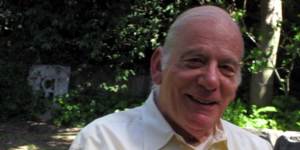
Andrew Rogers in later years.Supplied
Born in a Jewish family in pre-war Hungary,he saw the German invasion of his country first-hand,to the extent of having a pistol held to his head and having his mother smuggle him out of danger in the boot of a car. He was still in Hungary,in Budapest,at the war’s end,when the Soviets took over.
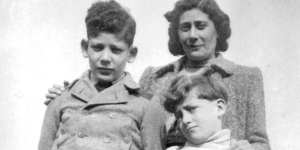
Andrew Rogers (left) with his mother Katie and brother Andy in Budapest circa 1941.Supplied
Andrew John Rogers was born on April 30,1933,one of four children in what might be called a blended post-war family,the surviving parents of two families marrying and adopting each other’s children. The blended family’s name was Rozsa,the name later Anglicised.
Before and during the siege of Budapest,when Rogers was 11,his Catholic stepmother Margit hid him and his mother,risking her life in doing so because she was harbouring Jews. When the Soviets took over,the family fled to Austria and,from there,moved on to Switzerland,where Rogers attended Schweizerische Mittelschul in Davos.
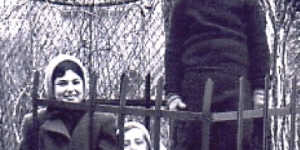
Siblings to be:Budapest circa 1941 (L-R) Mary,Andy,John,Andrew.Supplied
From there,the family went on a circuitous route through Northern India,where Rogers briefly attended the Bishop Cotton School for Boys in Shimla,in the northern Indian state of Himachal Pradesh.
The family ended their exodus,settling in Sydney in 1947. Rogers,who was deeply bonded to his siblings,Andy,John,and Mary,attended Cranbrook and then Sydney University to study Law. He graduated with Honours,and an acquaintance offered him the job of looking after the appeal books in a case before the Privy Council in England,still at that stage Australia’s final court of appeal.
Rogers offered to assist Queen’s counsel Garfield Barwick with his luggage on the flight back to Australia. He was astonished when Barwick opened his coat and revealed the plant cuttings he was smuggling into the country. Years later,when Chief Justice Barwick was haranguing him in the High Court,Rogers,with a lively sense of humour,was tempted to interject:“Remember those illegal plants,your Honour!”
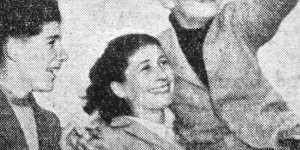
Newspaper clipping (caption incorrect) showing Mrs Katie Szenes and her two sons,Andrew (left) and Andy (in mother’s arms),catching their first sight of the Harbour Bridge from the boat deck of the Manoora.Supplied
Rogers was admitted to the bar in 1956 and took silk in 1973. He performed brilliantly,and an impressive coterie of juniors worked with him,including later luminaries Bret Walker,Noel Hutley,Jim Allsop,Bob Macfarlan,Bob Austin and Keith Mason.
In 1979,aged 46,he was appointed to the bench. Lawyer Helen Coonan,herself destined to enjoy a high-profile public life,wrote to him congratulating him on his appointment,and from that,a friendship developed,culminating in marriage in 1983. The marriage was celebrated at the Wayside Chapel,Kings Cross,by the Rev Ted Noffs and officially performed at the Australian Embassy in Paris,with former prime minister Gough Whitlam in attendance.
There was an age difference of 14 years,Coonan having been born the year Rogers arrived in Australia,but they would be together for more than 40 years,and it turned out to be an exceedingly happy marriage. They had three children between them:Karen and Nicole from Rogers’ former marriage and Adam Coonan from Helen’s former marriage.
In the mid-1980s,Rogers took a sabbatical and went with his wife to study in New York,taking time while there to write slabs of the famous AWA case (relating to the liability of auditors in circumstances of corporate collapse) he was handling in Australia.
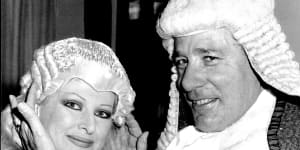
Partners-in-law:Judge Rogers adjusting the wig of his wife Helen Coonan when she was admitted to the Bar in July,1986.Fairfax
The New York trip was,he said,“the experience of a lifetime”. He studied mediation at Columbia University and was invited to participate in the Aspen Summer School Dialogue,which was at the beginning of major changes in thinking about corporate law and litigation practice globally. He brought back his learnings on mediation to happily see them taken up in Australia by his friend and ardent supporter,Chief Justice Sir Laurence Street.
In 1987,Rogers became the first chief judge of the Commercial Division of the NSW Supreme Court. In this position,his reputation was forged:commercial cases were subject to strict case management with tight deadlines and an expectation of the highest standards of preparation and professionalism.

Andrew Rogers QC,the Audit Quality Review Board chairman,2006.AFR
Under Rogers,the quid pro quo was that commercial cases would be decided with proper despatch,and the commercial community could be confident in using the court. Rogers enforced how barristers ran commercial cause cases. Former Supreme Court judge George Palmer,a commercial barrister at the time,recalled the changes as “shocking”,“utterly brutal”,and the most dramatic change to court procedure in 150 years.
In days where justice demanded speed,he would often attend court without robe and wig,in an always dapper suit,and equally not require counsel to robe up. He once told a fill-in tipstaff:“You are too short to carry the staff,so - don’t bother with that!”
But Rogers’ ground-breaking reforms revolutionised how commercial litigation was conducted,happily coinciding with the opening-up of the Australian economy. When Rogers retired in 1993,Chief Justice Gleeson said:“The Commercial Division provides a fast track,but practitioners in that area are left in no doubt that it is also a hard track. To use a racing metaphor,the going in the Commercial Division is always firm. That suits some horses and riders better than others,but it suited me well as a barrister,and it suits me even better now.”
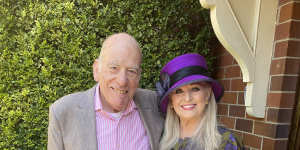
Andrew Rogers and wife,former NSW senator Helen Coonan,before the COVID-19 pandemic.Supplied
Rogers continued as a lawyer. He became a recognised international arbitrator,selected by his colleague practitioners to chair arbitral panels on difficult questions that would determine seminal issues,including sorting out the collapsed Dabhol Power Company in India,given its unfortunate links to Enron.
He was a legal consultant for the Australian Securities and Investments Commission (ASIC) and the law firm Clayton Utz. Among numerous appointments,he was a part-time commissioner on the NSW Law Reform Commission,a member of the consultative committee of the establishment of the Australian Commercial Disputes Centre,and a fellow of the Australian Institute of Arbitrators.
Rogers,who was awarded an Order of Australia (AO),was appointed the inaugural Chancellor of Southern Cross University and adjunct professor at several other universities. He also joined the Court for Arbitration in Sport and became resident judge during the Sydney 2000 Olympics.
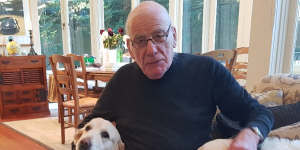
Andrew Rogers in recent years.Supplied
Andrew Rogers’ died in Sydney on February 4,2024. His funeral was held at St Stephen’s Macquarie Street,officiated by clergy from St James’ King Street. It was attended by two former prime ministers,several former chief justices,many other judges and prominent members of the bar. He is survived by his wife,Helen,three children,seven grandchildren and three great-grandchildren.
Malcolm Brown